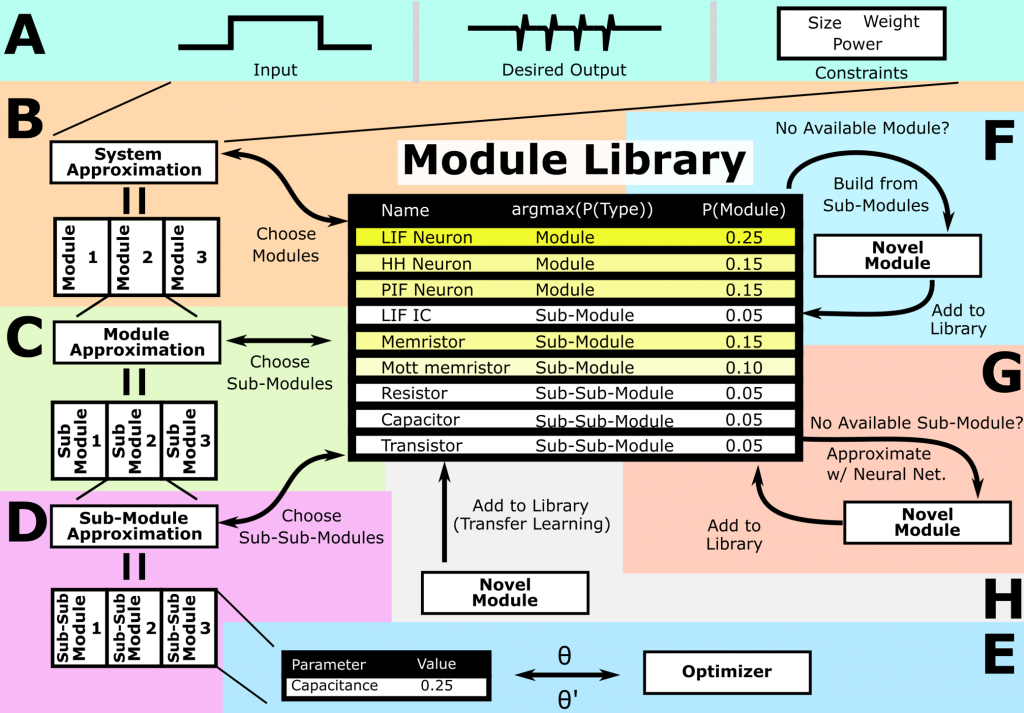MAMMAL
The process of discovering, designing, and optimizing neuromorphic computers is labor-intensive and requires a highly-skilled workforce. In order to accelerate the development of neuromorphic computers, we created an AI-enhanced codesign tool called Modular And Multi-level MAchine Learning (MAMMAL). MAMMAL is capable of automatically designing simple, dendrite-like signal processing circuits and providing specifications for novel devices. More information can be found here.

D.C. Crowder, S.G. Cardwell, J.D. Smith, AI-enhanced Codesign for Next-Generation Neuromorphic Circuits and Systems, Sandia National Labs., Albuquerque, NM, SAND 2002-13074710205,2022
COINFLIPS
The brain is capable of performing incredibly complex computations using neurons that fire stochastically. COINFLIPS (CO-designed Improved Neural Foundations Leveraging Inherent Physics Stochasticity) attempts to recreate the brain’s ability to use stochastic computing elements in order to accelerate scientific computing and machine learning. COINFLIPS was funded through the Office of Science Co-Design in Microelectronics program.
For more information, visit here.

Nonlinear Dendritic Processing in Next-Generation Neuromorphic Architectures
We are developing novel neural-inspired architectures that expand the potential of neuromorphic engineering. Biological neurons receive inputs from other neurons through physical structures known as dendrites. While the intricacy of biological dendrites is well-known (fan-in is significantly greater in biological systems than in silicon), less attention has been paid by neuromorphic developers to active processing that is done by the dendrite. Our research aims to develop a novel approach to neuromorphic computing, inspired by dendritic processing in biological neurons, that will capture the level of biological complexity necessary for brain-like computing on a computer. Next-generation neuromorphic circuits and systems based upon nonlinear dendritic processing will balance the trade-off between scalability and biological complexity.